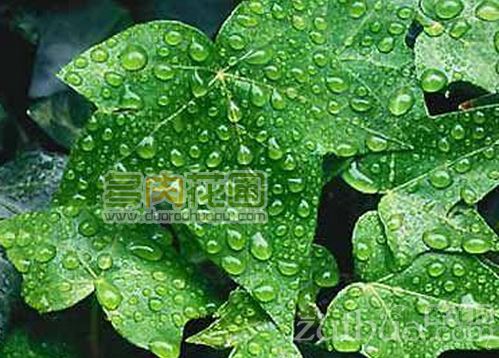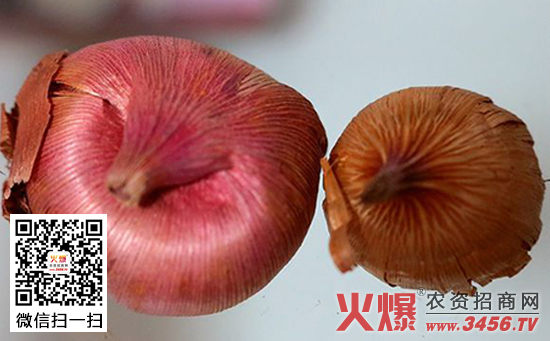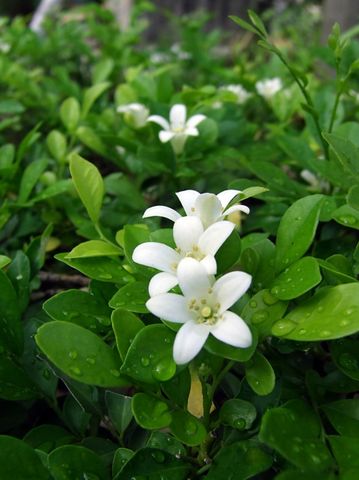Control methods of Ivy Leaf spot
[symptoms] large waterlogged brown to dark brown patches are produced at the edge of the leaf, which often rapidly extends to the 1mm of the leaf or the whole leaf, and a gray mildew layer occurs when the humidity is high. It happens seriously in some years.
[occurrence regularity] the sclerotia overwintered mainly in the sick and disabled body. Sclerotia germinated in spring and conidia were produced for primary infection. Continuous rainy or foggy or high humidity is easy to epidemic, resulting in a large area of falling flowers or plant rot. When the soil temperature is too low or the plants are poorly ventilated, the bacteria are rampant and cause serious damage.
[prevention and control methods] ① advocates the cultivation method of shelter from rain. The ② shed or open field was sprayed with 1200 times of pyrimidine suspension or 50% of carbendazim wettable powder, 1500 times of 50% Sukeling wettable powder, 1000 times of 50% propofoin wettable powder, and 65% thiocarbamyl 1000 times of thiocarbamyl wettable powder. Once every 10 days, continuous prevention and treatment for 2 or 3 times.
Ivy leaf spot
Symptoms and pathological changes: in the early stage of the disease, there were small round dark spots on the leaf surface with oily halo. After the expansion, it is black. Some become polygonal, sometimes there are brown deposits around the spot, and occasionally ulcer spots occur on the petiole. The infected leaves do not fall off.
The disease overwinters in the diseased tissue, warm and humid conditions, bacteria overflow from the diseased tissue, spread by wind, rain or insects, causing primary infection and re-infection, poor ventilation and poor light transmission, the disease is more likely to occur.
Prevention and control methods: 1. Select the disease-free mother plant for reproduction. Thoroughly remove the diseased leaves and reduce the source of the disease. 2. Strengthen management and enhance plant disease resistance: reasonable close planting, scientific fertilization, and take effective measures to make plant growth strong and enhance disease resistance. 3. Chemical control: in the early stage of the disease, 3000 times of streptomycin sulfate or 12% green EC and 20% Longke suspension were sprayed. When the rate of diseased leaves reaches 10% to 15%, the medicament can choose 50% carbendazim wettable agent 1500 times, or 50% methyl thiophanate wettable powder 2000 times, or 80% Dysen zinc wettable powder 400 times, the control effect is better.

One: anthrax
Symptoms: the leaves were grayish white when the damage was severe, mainly in the continuous autumn rain.
Prevention and control method: put the ivy in a ventilated and transparent place, and it is forbidden to water the leaves. If ivy is found to be infected with anthracnose, 50% carbendazim wettable powder can be sprayed 500 times, once every 7 days, 3-4 times in a row.
Two: leaf spot disease
Symptoms: the leaves are withered and yellow, mostly caused by poor ventilation and muggy environment.
Prevention and treatment: remove diseased leaves at the initial stage of the disease and burn them centrally. Spray 1% Bordeaux solution at the same time, once every 7 days, for 4-5 times.
Three: scale insects
Symptoms: poor growth of ivy, and can pollute soot disease, causing leaves yellowing. Early leaf fall.
Prevention and treatment: manual scraping. When the occurrence area is large, you can also spray 40% omethoate cream 800 times solution.
Conclusion: there will also be some diseases and insect pests in the process of ivy conservation, so we should pay attention to timely prevention when planting and deal with the problems in time.
- Prev

What are the requirements for planting cut flowers of sword orchids?
(1) before sowing the seed ball, soak the seed ball in clean water for 15 minutes, and then disinfect it. The commonly used disinfection methods are: 0.1% mercury solution for 30 minutes, 1%-2% formalin solution for 20 minutes and 60 minutes. (2) cultivation in open field during planting period.
- Next

Why are the leaves of Jiuli incense yellowing and falling off?
Jiuli incense likes to be warm and afraid of cold. After winter, Jiuli incense, which is moved into the room to prevent freezing and keep warm, occurs leaf yellow shedding, in addition to blowing cold wind, the main reason is that the basin soil is too wet or too wet. It is also related to poor indoor air circulation, dry environment, or too muggy. Prevention method: first
Related
- Fuxing push coffee new agricultural production and marketing class: lack of small-scale processing plants
- Jujube rice field leisure farm deep ploughing Yilan for five years to create a space for organic food and play
- Nongyu Farm-A trial of organic papaya for brave women with advanced technology
- Four points for attention in the prevention and control of diseases and insect pests of edible fungi
- How to add nutrient solution to Edible Fungi
- Is there any good way to control edible fungus mites?
- Open Inoculation Technology of Edible Fungi
- Is there any clever way to use fertilizer for edible fungus in winter?
- What agents are used to kill the pathogens of edible fungi in the mushroom shed?
- Rapid drying of Edible Fungi

